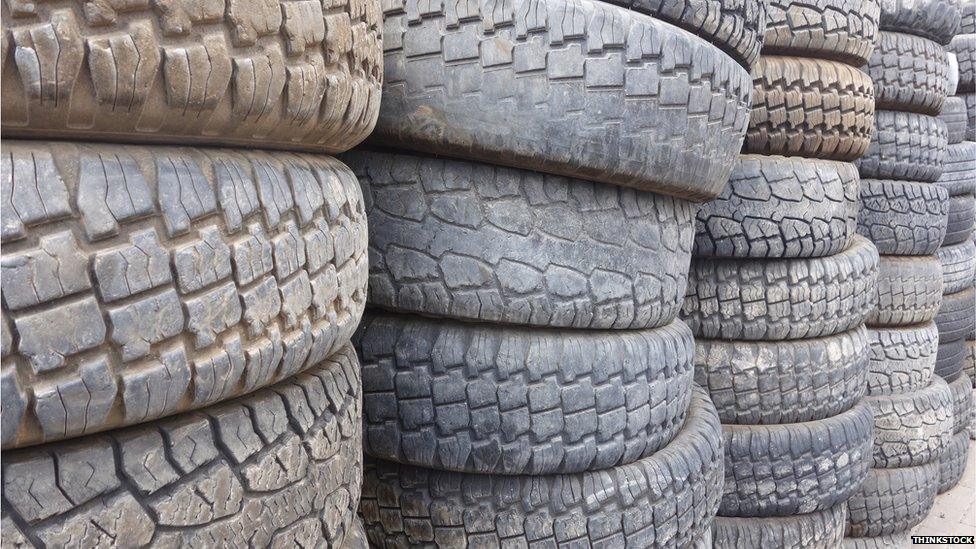Plastic from tyres 'major source' of ocean pollution
- Published

Tyres can give off plastic particles, that can end up in the ocean
Particles of debris from car tyres are ending up in the ocean as "plastic soup", conservationists warn.
Microplastics from tyres and textiles are a bigger source of marine pollution than the breakdown of larger plastic waste in some areas, says the IUCN.
Up to 30% of plastic released into the oceans each year comes from primary microplastics, not the disintegration of larger pieces, a report found.
Debris from tyre abrasion and synthetic fabrics are the main sources, they say.
The IUCN reviewed data from seven global regions to look at how much of the estimated 9.5 million tonnes of new plastic waste released into the oceans each year comes from primary microplastics.
These are tiny plastic particles from the likes of consumer products rather than the degradation of larger bits of plastic in the oceans.
The report found between 15% and 31% of plastic pollution came from primary microplastics, of which the biggest contributors (almost two-thirds) were abrasion of synthetic textiles, while washing, and abrasion of tyres, while driving.
Synthetic rubber, made from a variant of plastic, makes up around 60% of the rubber used in tyres.
Other sources included microbeads in cosmetics, which contributed about 2% of the releases to the ocean globally.
François Simard, deputy director of IUCN's marine programme, said the findings came as a surprise.
"We discovered that most of the microplastics are coming from either the clothes or from the tyres," he told BBC News. "Microplastics are going everywhere in the sea and into the food chain, let's close the plastic tap."

Many sources of plastic end up in the ocean
IUCN director general Inger Andersen said the report was "a real eye-opener".
"Our daily activities, such as washing clothes and driving, significantly contribute to the pollution choking our oceans, with potentially disastrous effects on the rich diversity of life within them, and on human health," she said.
The release of microbeads from cosmetic products has received widespread publicity, resulting in action from manufacturers.
However, solving plastic pollution from tyres and synthetic clothes will be harder to address.
Joao de Sousa, marine project manager for the IUCN's global marine programme, said solutions must include product and infrastructure design as well as consumer behaviour.
For example, synthetic clothes could be designed to shed fewer fibres and consumers can act by choosing natural fabrics.
In parts of the world, such as North America, primary microplastics are a bigger source of marine plastic pollution than plastic waste, according to the report.
Meanwhile, synthetic textiles are the main source of primary microplastics in Asia and tyres dominate in the Americas, Europe and Central Asia.
Last month, a separate report by a scientific body that advises the UN on marine environmental protection highlighted concerns about debris from vehicle tyres.
Report co-editor Peter Kershaw called for further investigation and partnerships with industry to tackle the problem.
Follow Helen on Twitter, external.